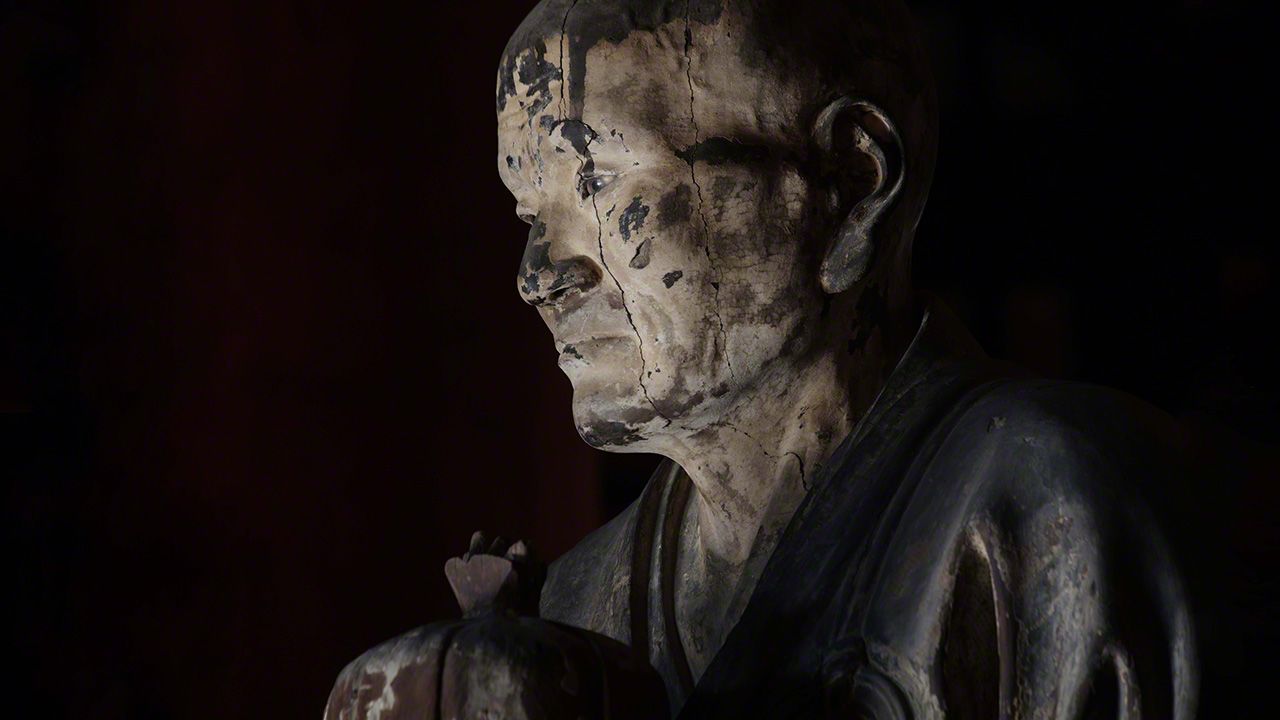
Standing Statue of the Bodhisattva Asanga Mujaku
Culture Art Guide to Japan- English
- 日本語
- 简体字
- 繁體字
- Français
- Español
- العربية
- Русский
A lifelike expression of breathtaking realism. An image with a sense of weight and presence that make you feel convinced you’re looking at a real, living person. The rock crystal eyes seem to focus on something in the distance, the glinting pupils reflecting a gentle light.
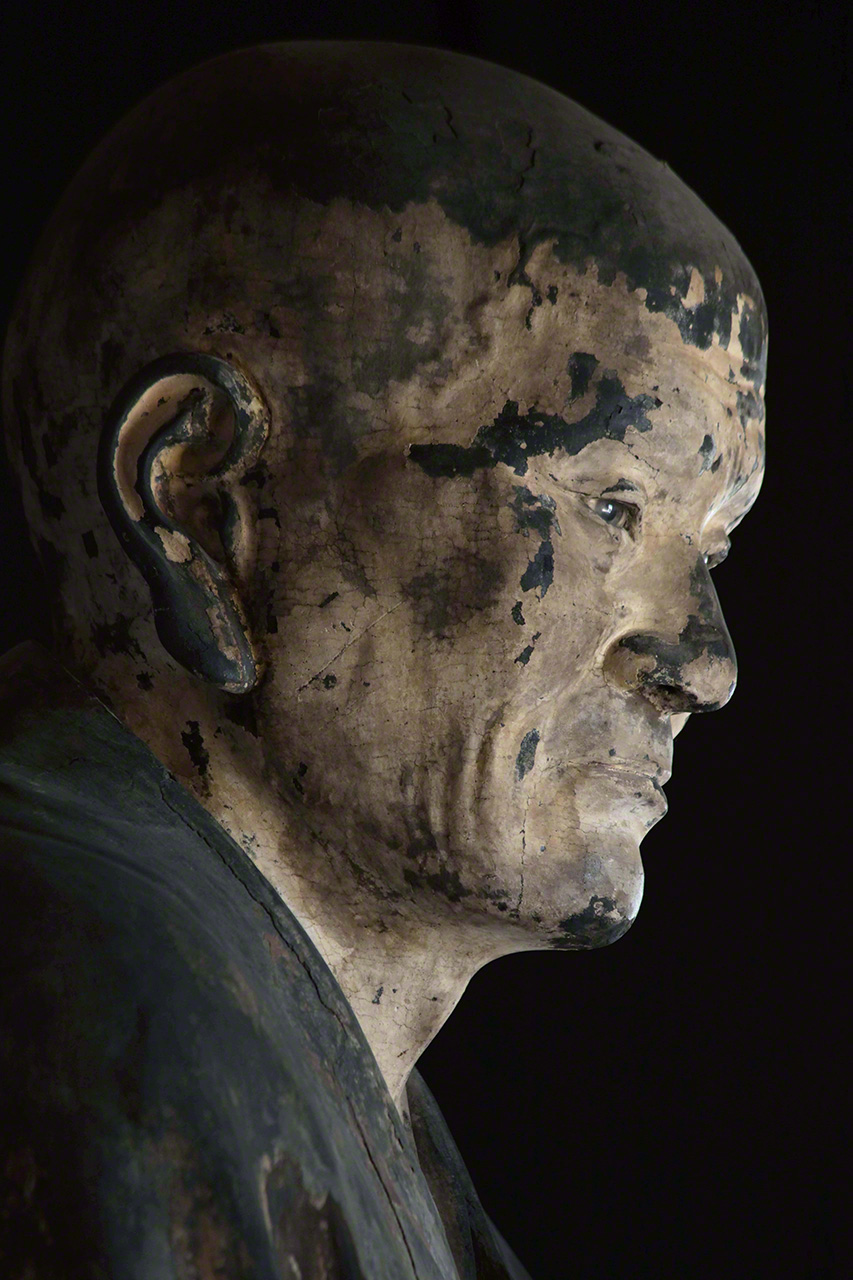
(© Muda Tomohiro)
The figure stands with his right leg slightly forward, as if he is about to start moving at any moment.
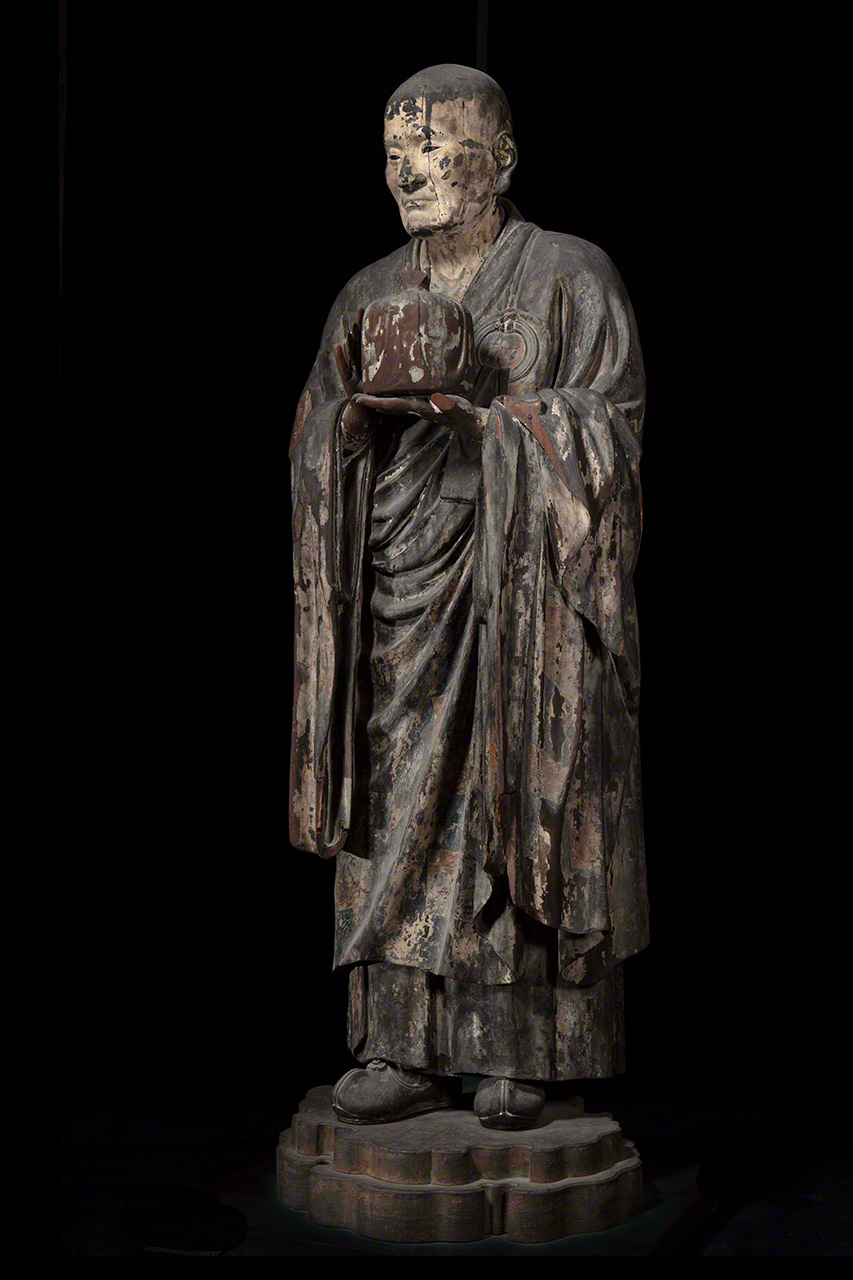
(© Muda Tomohiro)
This wooden sculpture, made with the jointed-block (yosegi-zukuri) method, is a standing image of Asanga (known as Mujaku in Japanese) that belongs to the temple Kōfukuji in Nara. Asanga was a historical figure, who lived in Gandhara in northern India in the fifth century. Together with his brother Vasubandhu (known as Seshin in Japanese), Asanga was a monk and scholar who established the Yogachara school of Mahayana Buddhism, which teaches that what we perceive as reality does not exist: only consciousness is real. The brothers are said to have received the teaching from Maitreya (the Buddha of the Future), and for this reason statues of Asanga and Vasubandhu stand in the temple’s Hokuendō (Northern Round Hall), flanking the main image of Maitreya (Miroku in Japanese). Maitreya is the prophesied Buddha of the Future, who will eventually restore the dharma to the world after the life and teachings of Shakyamuni have been forgotten.
The Hokuendō at Kōfukuji was built in the first half of the eighth century for the repose of the soul of Fujiwara no Fuhito (659–720). The decision to dedicate the hall to Maitreya was presumably intended to ensure that Fuhito would be reborn in Maitreya’s Pure Land paradise. But in 1181, the temples of Nara were put to the torch during the Genpei War between the Minamoto and Taira clans. Restoration work began in 1208, and new Buddhist images were made, including these bodhisattva statues. Sources record that the sculptor Unkei (1150–1223) was commissioned to work on the new images, and it is believed that the famous artist would have supervised a team from the Kei-ha school of master Buddhist sculptors.
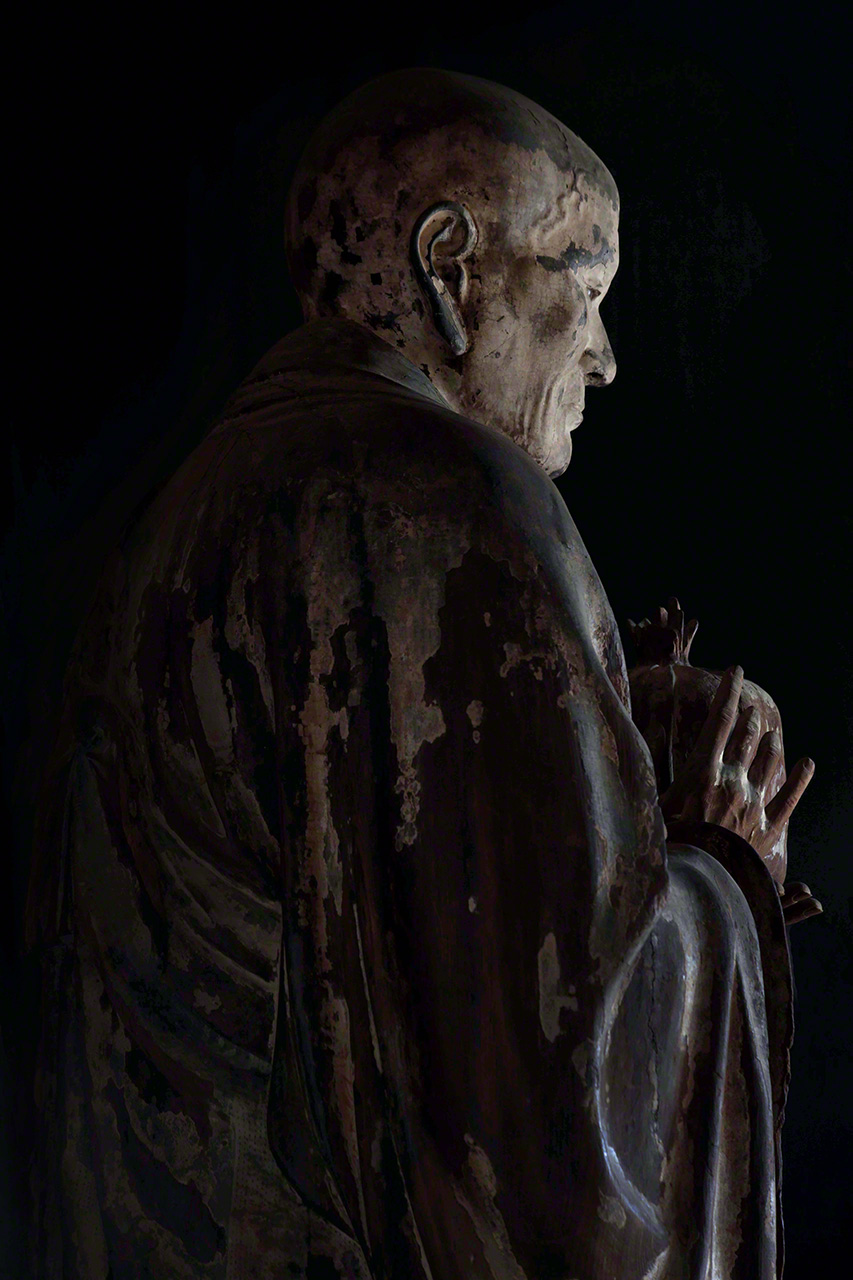
(© Muda Tomohiro)
The metal clasp that holds the robes over the figure’s left shoulder is seen in Chinese paintings from the Northern Song dynasty (960–1127), but the Kei-ha masters are thought to have been the first to incorporate this element into sculpture in Japan. On his left hand, Asanga cradles a reliquary said to contain either sutras or Buddhist relics, gently supported by his right hand. The sculpture perfectly replicates the gesture of a person holding something of great importance, and represents a new pinnacle of realism in Buddhist sculpture.
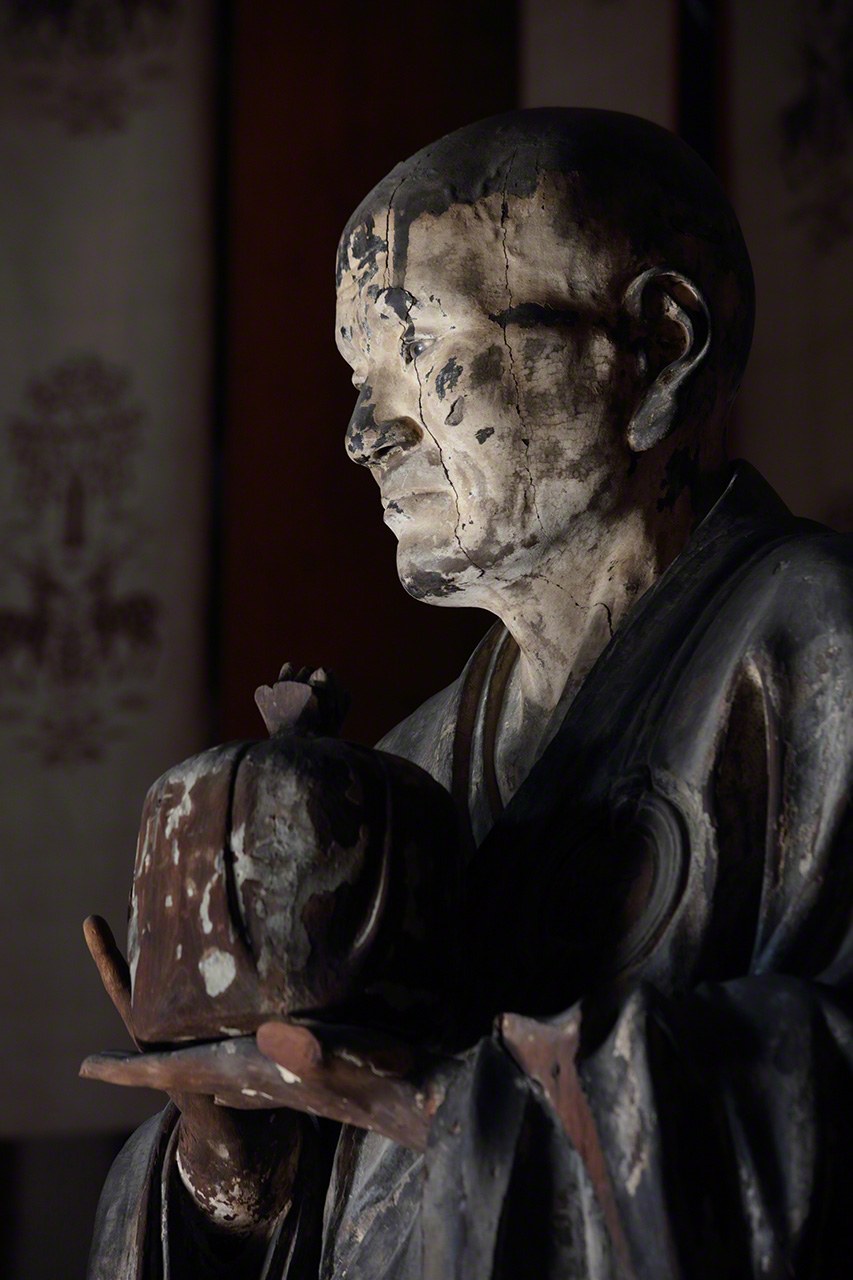
(© Muda Tomohiro)
Standing Statue of the Bodhisattva Asanga (Mujaku)
- Height: 193 cm
- Date: Kamakura Period (1185–1333)
- Kōfukuji (Nara Prefecture) (visitors wishing to view it should confirm whether it is on display in advance)
- National treasure
(Originally published in Japanese. Banner photo: Standing statue of the Bodhisattva Asanga [Mujaku]. © Muda Tomohiro.)
